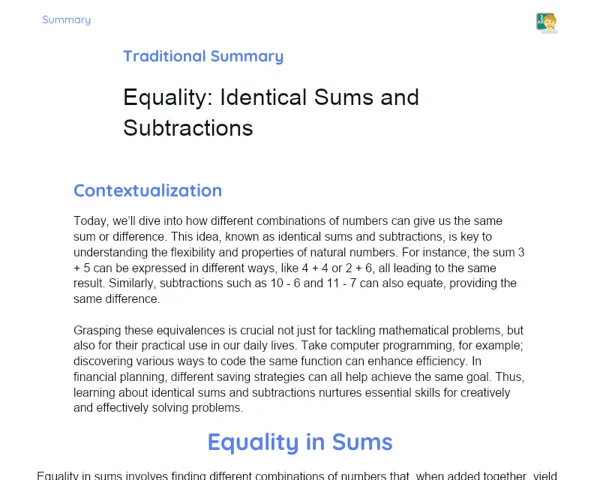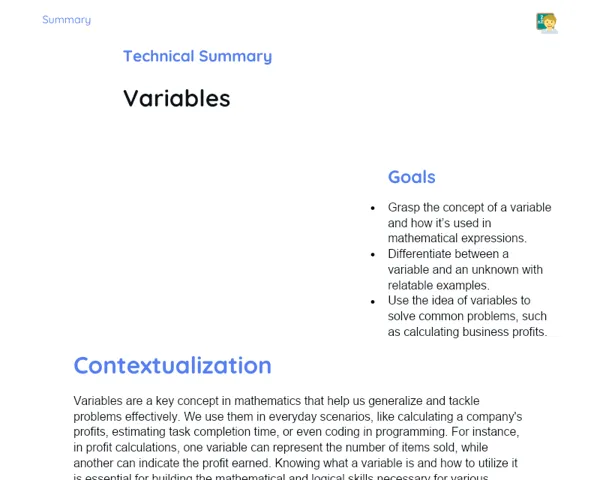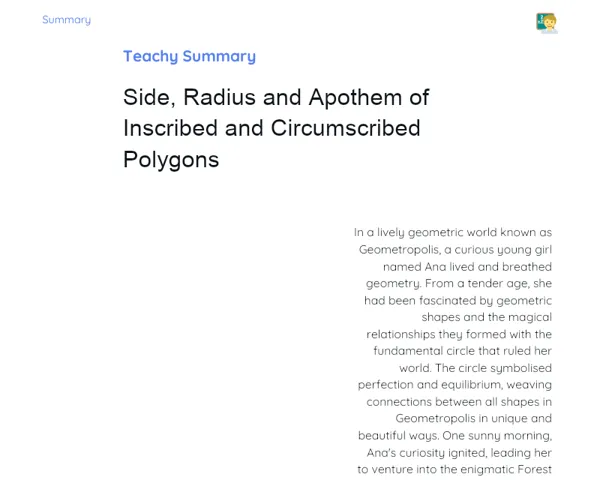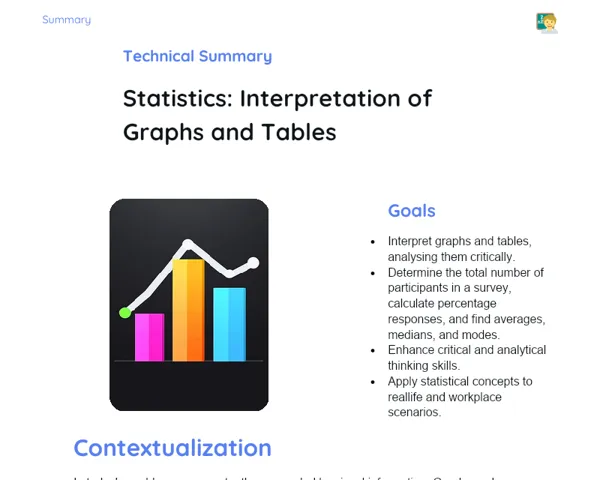Socioemotional Summary Conclusion
Goals
1. 📏 Understand how to calculate the area of flat shapes drawn on a grid by counting the squares or parts of squares.
2. 😊 Develop socio-emotional skills by recognising, understanding, naming, expressing, and regulating emotions during maths problem-solving.
Contextualization
Did you know that figuring out the area of flat shapes is not just for the brainiacs? 🤔 Imagine you need to cover your room's floor with carpets and want to ensure every nook and cranny is covered! Knowing how to calculate the area will help you sort out how many carpets you need. Plus, as we learn about areas, we'll also uncover how to better manage our emotions, making learning a whole lot calmer and more enjoyable. 🏠✨
Exercising Your Knowledge
Area of Flat Shapes
The area of a flat shape measures the surface inside that shape. It is expressed in square units, like square centimetres (cm²) or square metres (m²). When we grasp the concept of area, we can apply this knowledge in various everyday scenarios, like measuring spaces or planning coverings. More than just maths, calculating areas helps us to foster skills like patience, attention to detail, and the ability to tackle challenges.
-
Square Units: Area is measured in square units, such as cm² or m².
-
Applicability: Knowing how to calculate areas assists with everyday tasks like measuring a room's space.
-
Skill Development: This activity promotes patience and attention to detail, which are key for effective learning.
Unit Squares
A unit square is a square where each side measures one unit of length. When working on a grid, we use these small squares to determine the area of flat shapes. Counting unit squares serves as the foundation for understanding and computing area, making maths more visual and tangible. This also enhances our observation and analytical skills.
-
Definition: A unit square has sides of one unit of length, making it easier to count the area.
-
Visualisation: The grid aids in visualising and calculating the area in a straightforward manner.
-
Observation Skills: Working with unit squares sharpens our observational and analytical abilities.
Grid
The grid is a framework made up of unit squares. It acts as a handy tool for calculating the area of flat shapes. By drawing figures on a grid, we can count the squares or parts of squares to find the area. This method not only supports mathematical learning but also encourages patience and a systematic approach to problem-solving.
-
Definition: A grid is composed of unit squares that help calculate the area of shapes.
-
Practical Tool: It simplifies area calculation by counting squares and parts of squares.
-
Socio-Emotional Development: Encourages patience and systematic problem-solving.
Key Terms
-
Area: Measure of the surface inside a flat figure, expressed in square units.
-
Unit Squares: Squares with sides of one unit of length, used for calculating areas in grids.
-
Grid: A network of unit squares, used to visualise and calculate areas of flat figures.
For Reflection
-
How did you feel when counting the squares to determine the area? Did you experience moments of frustration or joy? How did you handle those emotions?
-
In what other everyday situations do you think calculating areas could come in handy? Consider strategies to apply this knowledge outside of the classroom.
-
Did collaborating during the activity help in managing your emotions? How can working together influence our social and academic skills?
Important Conclusions
-
⬇️ The area of flat figures measures the surface inside a shape and is expressed in square units, like cm² or m².
-
🟡 Unit squares are squares with sides of one unit of length, used as a basis for calculating areas on grids.
-
🔵 The grid is a practical tool that facilitates area calculation by counting squares and parts of squares.
-
😊 While tackling these maths problems, we recognise, understand, name, express, and manage our emotions, fostering a positive and collaborative learning space.
Impacts on Society
Our understanding of areas goes beyond the classroom! Imagine you want to decorate your room with new carpets 🛋️. Knowing how to calculate the area will ensure you buy just the right number of carpets. This skill proves useful in daily tasks, like arranging furniture or even planning for a home gathering.
Moreover, working with grids and calculating areas nurtures our patience and enhances our problem-solving abilities. At the same time, understanding our emotions and learning to manage them makes every learning moment more fulfilling and less stressful. These emotional skills are indispensable for our well-being and for cultivating healthy social connections. 🌟
Dealing with Emotions
To better manage your emotions while studying, try this exercise at home:
Recognise how you feel when faced with a tricky maths problem.
Understand the reasons behind these emotions – is it the challenge of the problem or the urgency to solve it swiftly?
Name the emotions, like anxiety, frustration, or even joy when you crack a question.
Express these emotions appropriately, whether it's by talking to a friend or jotting them down in a journal.
Regulate your emotions using techniques such as deep breathing, thoughtfully scheduled breaks, or even tuning into some relaxing music before diving back into study. 🤌🎶
Study Tips
-
📑 Practice consistently: Engage in area calculation exercises on grids regularly. The more you practice, the more confidence you'll build!
-
👥 Study in pairs or groups: Working with friends can make learning enjoyable and collaborative. You can share ideas and tackle questions together.
-
🪴 Connect to real life: Aim to apply what you've learned to daily situations, such as measuring the area of a room or calculating space for a garden. This approach makes learning more tangible and meaningful.



